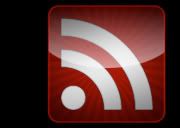
HIROSHIMA
At 2:45 a.m. on Monday, August 6, 1945, a B-29 bomber, the Enola Gay, took off from Tinian, a North Pacific island in the Marianas, 1,500 miles south of Japan. The twelve-man crew were on board to make sure this secret mission went smoothly. Colonel Paul Tibbets, the pilot, nicknamed the B-29 the "Enola Gay" after his mother. Just before take-off, the plane's nickname was painted on its side.The Enola Gay was escorted by two other bombers that carried cameras and a variety of measuring devices. Three other planes had left earlier in order to ascertain the weather conditions over the possible targets.On a hook in the ceiling of the plane, hung the ten-foot atomic bomb, "Little Boy." Navy Captain William S. Parsons ("Deak"), chief of the Ordnance Division in the "Manhattan Project," was the Enola Gay's weaponeer. Since Parsons had been instrumental in the development of the bomb, he was now responsible for arming the bomb while in-flight. Approximately fifteen minutes into the flight (3:00 a.m.), Parsons began to arm the atomic bomb; it took him fifteen minutes. Parsons thought while arming "Little Boy": "I knew the Japs were in for it, but I felt no particular emotion about it."There had been four cities chosen as possible targets: Hiroshima, Kokura, Nagasaki, and Niigata (Kyoto was the first choice until it was removed from the list by Secretary of War Henry L. Stimson). The cities were chosen because they had been relatively untouched during the war. The Target Committee wanted the first bomb to be "sufficiently spectacular for the importance of the weapon to be internationally recognized when publicity on it was released."3On August 6, 1945, the first choice target, Hiroshima, was having clear weather. At 8:15 a.m. (local time), the Enola Gay's door sprang open and dropped "Little Boy." The bomb exploded 1,900 feet above the city and only missed the target, the Aioi Bridge, by approximately 800 feet.Staff Sergeant George Caron, the tail gunner, described what he saw: "The mushroom cloud itself was a spectacular sight, a bubbling mass of purple-gray smoke and you could see it had a red core in it and everything was burning inside. . . . It looked like lava or molasses covering a whole city. . . ."The cloud is estimated to have reached a height of 40,000 feet.Unlike many other bombing raids, the goal for this raid had not been a military installation but rather an entire city. The atomic bomb that exploded over Hiroshima killed civilian women and children in addition to soldiers. Hiroshima's population has been estimated at 350,000; approximately 70,000 died immediately from the explosion and another 70,000 died from radiation within five years.

NAGASAKI While the people of Japan tried to comprehend the devastation in Hiroshima, the United States was preparing a second bombing mission.
The second run was not delayed in order to give Japan time to surrender, but was waiting only for a sufficient amount of plutonium-239 for the atomic bomb. On August 9, only three days after the bombing of Hiroshima, another B-29, Bock's Car , left Tinian at 3:49 a.m.
The first choice target for this bombing run had been Kokura. Since the haze over Kokura prevented the sighting of the bombing target, Bock's Car continued on to its second target. At 11:02 a.m., the atomic bomb, "Fat Man," was dropped over Nagasaki. The atomic bomb exploded 1,650 feet above the city.Approximately 40 percent of Nagasaki was destroyed. Luckily for many civilians living in Nagasaki, though this atomic bomb was considered much stronger than the one exploded over Hiroshima, the terrain of Nagasaki prevented the bomb from doing as much damage. Yet the decimation was still great. With a population of 270,000, approximately 70,000 people died by the end of the year.
"The Atomic Bomb"[http://www.cfo.doe.gov/me70/manhattan/hiroshima.htm]
"Atomic Bombing Of Hiroshima"[http://www.wtj.com/archives/hiroshima.htm]
"Bombing of japan"[http://www.worldwar2database.com/html/japanbom.htm]
"Nagazaki Atomic bomb"[http://www.johnstonsarchive.net/nuclear/radevents/1945JAP2.html]






No comments:
Post a Comment